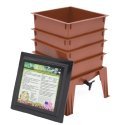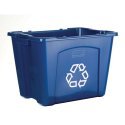 BottleBiology.Org has an interesting investigation device called a decomposition column A.K.A bottle composting. They also explain how to build and use from recycled plastic soda bottles for educational purposes in observing decomposition.
BottleBiology.Org has an interesting investigation device called a decomposition column A.K.A bottle composting. They also explain how to build and use from recycled plastic soda bottles for educational purposes in observing decomposition.
Bottle Biology was funded by a grant from the National Science Foundation administered by the University of Wisconsin-Madison and a companion book can be found here.
By using recycled, transparent (clear), two-liter soda bottles, cutting them up, organizing them in a column like fashion and then filling them with composting materials, it is possible to observe the different stages of breakdown more readily.
BottleBiology.Org proposes something incredibly helpful with this device as a parent and child activity, especially for those who enjoy biology, gardening, nature or just composting and want to enlighten themselves and others into this remarkable field of sustainability.
The possibilities with this tool are virtually as limited as the kinds of things that people throw away or compost and the different techniques used in composting itself.
Decomposition columns are even used for investigating such things as acid rain by using vinegar as a simulation tool instead of water.
Investigating first-hand with children what is really going on down their in our soil, either from landfills, leaf compost, kitchen refuse with worms or whatever the imagination might think up to investigate is a great way to see up and close how moisture (adding water) and oxygen (adding holes in the bottles) effects the conditions of a compost pile underground.
So if you find yourself looking for an interesting tool for exposing the conditions we find below the ground, no matter if they be aerobic or anaerobic, making a decomposition column is easy, fun and most of all, educational for everyone, opening a plethora of possibilities to even the most experienced composter.





